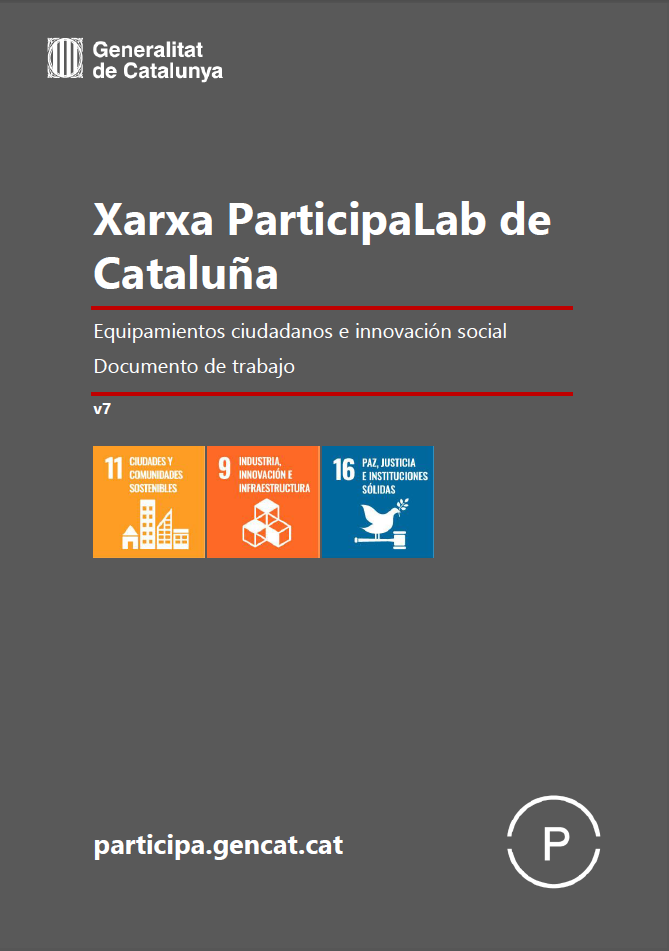When working with the idea of the citizen participation ecosystem from the point of view of a national government, one of the basic questions is how the Administration should nurture and facilitate such ecosystem. There are, at least, two approaches that have been traditionally explored.
- On the one hand, the Administration can fund the creation or growth of a body of professionals that can contribute to deploy a number of citizen participation initiatives all over a given territory. These professionals can work at the higher level of the Administration or can be distributed or scattered on lower levels of the Administration (i.e. local administrations), but the result is to be able to cover most necessities with a good amount of trained and dedicated professionals.
- On the other hand, and sometimes compatible with the former approach, the Administration can fund the creation or growth of a constellation of facilities that would run initiatives specifically devoted to the promotion of citizen participation. They can have many names depending on their particular focus or especialization: citizen labs, living labs, social innovation labs, fabrication labs (fab labs), maker spaces, etc.
The problem with these approaches is, at least, double:
- They are not very economically sustainable, as they require and maintaining groups of people and networks of facilities with a single purpose and which can very difficult be replicated or scaled outside of their specific area of intervention. Of course this is a goal worth aiming at, but for starters it makes the investment very demanding.
- They are not very socially sustainable, as they divert the attention and focus of the citizen, which now has new places to go, which can be good, but also bad: people have a limited capability to gather at and to focus their attention on.
Another approach is to leverage the fact that there are already public facilities on place and that people are already using them and gathering around them. Thus, instead of creating a new network of people and facilities in addition to the existing ones, another approach could be creating a new network of people and facilities upon the existing ones, or in other words, overlapping new goals and uses with the already existing ones.
The Catalan ParticipaLab Network aims at just that. We borrowed the name from the successful ParticipaLab initiative of the Medialab-Prado in Madrid (Spain) but with the idea not to create a new big facility, not even a network of small facilities, but to weave a network of citizen labs by providing a portfolio of new content and services to the already existing networks. The logic behind it is to follow Artur Serra’s ideas on citizen labs, who proposes thinking of citizen labs as we do in public health systems: there is a large network of primary health care you go to when you feel sick, a second network of regional hospitals you are sent to if things get complicated, and national network of top-level hospitals you are sent to when the situation becomes really bad. Same would apply to citizen participation and social innovation.
With that logic in mind, big top-level citizen labs would be the top-level hospitals of democratic innovation; regional networks of living labs or fab labs or maker spaces would be the regional hospitals, and… and already existing public facilities should be able to act as primary democratic innovation points of access for the general population at the local level.
A first approach to this scheme I drafted it at The role of public facilities and civic centres in a citizen participation ecosystem.
After this first scheme, my colleague Yago Bermejo and I (much more him than I, truth be told) developed the main principles, guiding lines and preliminary portfolio for such a network of public facilities devoted to citizen innovation for quality democracy.
The result is the report Xarxa ParticipaLab de Cataluña. Equipamientos ciudadanos e innovación social [Catalan Participation Lab Network. Public facilities and social innovation], which is expected to be the blueprint and roadmap to deploy such a network from the Catalan Government. The report is in Spanish and Catalan and can be downloaded below.
Downloads
Bermejo, Y. & Peña-López, I. (2020). Xarxa ParticipaLab de Cataluña. Equipamientos ciudadanos e innovación social. Barcelona: Generalitat de Catalunya.
Bermejo, Y. & Peña-López, I. (2020). Xarxa ParticipaLab de Catalunya. Equipaments ciutadans i innovació social. Barcelona: Generalitat de Catalunya.
